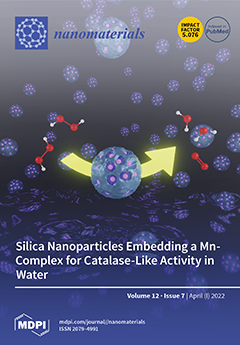A method using polypyrrole-coated Fe
3O
4 (Fe
3O
4@PPy composites) based extraction coupled with high performance liquid chromatography was developed for adsorption and detection of trace vitamin D
3 (VD
3) in aquatic products. The fabricated Fe
3
[...] Read more.
A method using polypyrrole-coated Fe
3O
4 (Fe
3O
4@PPy composites) based extraction coupled with high performance liquid chromatography was developed for adsorption and detection of trace vitamin D
3 (VD
3) in aquatic products. The fabricated Fe
3O
4@PPy composites were characterized by scanning electron microscopy, transmission electron microscopy, X-ray diffraction, Fourier transform infrared spectroscopy, and thermogravimetric analysis. Fe
3O
4@PPy composites showed efficient adsorption of VD
3 at pH 9.0 and 25 °C with a dose of 25 mg per 10 mL of sample solution and an adsorption time of 11 min. Methanol was selected as the desorption solvent to recover VD
3 from Fe
3O
4@PPy composites after 3 min of static treatment. Fe
3O
4@PPy composites can be used for VD
3 adsorption at least two times. The developed method showed a good linearity for VD
3 determination in the range of 0.1–10 μg/mL with a correlation coefficient of 0.9989. The limits of detection and quantification were 10 ng/mL and 33 ng/mL, respectively. The recovery of VD
3 in a spiking test was 97.72% with a relative standard deviation value of 1.78%. The content of VD
3 in nine aquatic products was determined with this method. Our results show that Fe
3O
4@PPy composites provide a convenient method for the adsorption and determination of VD
3 from the complex matrix of aquatic products.
Full article






